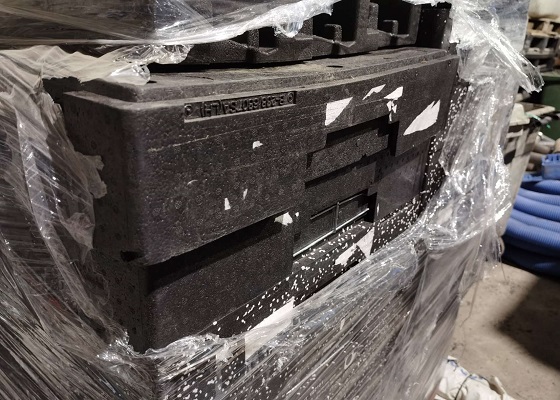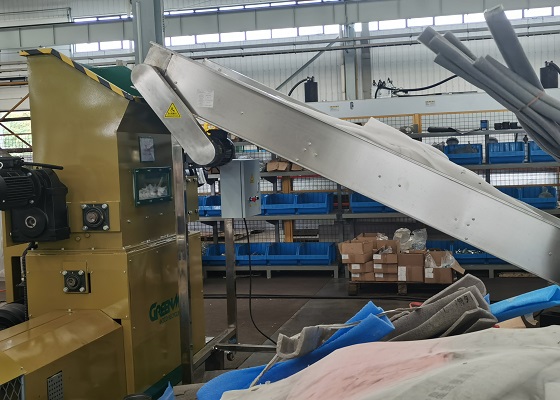In the automotive industry, EPP (Expanded Polypropylene) foam is widely used to package and protect parts. EPP is ideal for transporting and storing auto parts due to its excellent cushioning properties and durability. However, as usage increases, how to effectively recycle these EPP packaging waste materials has become an important environmental issue. This article will explore the key practices and challenges in recycling automotive EPP scrap packaging.
The first step in recycling automotive EPP packaging is shredding. First use the crushing part of the foam densifier to cut large EPP packaging into uniform small pieces. These small pieces can be heated and melted by the heating component of the foam densifier for easy storage and transportation. The volume of compressed EPP waste is reduced, which reduces processing costs and transportation difficulty. The compression ratio of GREENMAX foam densifier can reach 90:1.

The compressed EPP scrap can be reprocessed into new EPP products, such as automotive interior parts or packaging materials, through an extrusion molding process. In addition, EPP waste can also be used as filler or raw materials for other industrial products to achieve resource recycling.
Set up dedicated EPP waste recycling points in automobile production and maintenance workshops, and purchase a foam densifier to help collect and process waste materials in a centralized manner. Develop a standardized waste management process to ensure that EPP packaging waste is effectively classified and recycled, and to reduce the mixing of other waste materials. Optimizing the recycling logistics system can reduce costs and improve efficiency, establish a network of recycling partners, and improve the efficiency of centralized recycling of waste materials.

Recycling automotive EPP waste packaging not only helps reduce environmental burden, but also improves resource utilization efficiency. By applying advanced recycling technology, optimizing recycling processes, improving packaging design and production processes, and obtaining policy support and public participation, we can effectively deal with the challenge of EPP packaging waste and achieve the goal of sustainable development.